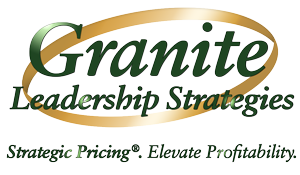Everyone wants to have a winning strategic price proposal to the Federal Government. What goes into that seems like it “just makes sense,” and it does, but often we find that Government contractors miss the boat on the strategic pricing® methods they use. Many companies cover the basics when it comes to responding to a Federal requirement and call it finished. Your strategic price must not only be compliant but also responsive, compelling, and convincing. To do that, you would be wise to employ some tested successful strategic pricing® methods.
There are many strategic pricing® methods to help you arrive at consistently successful Gov Con price proposals. Applying these few basic methods will help you get ahead of your competition. While pricing specialists can have little or no impact on the technical proposal, the pricing professionals can change the way their business proposal goes out the door using a few basics.
Know what it costs your company to do business.
We have often heard from many companies that they find it difficult to determine what it costs to do the project until the final RFP comes out. That is short-sighted. With a draft RFP, you can do an early estimate of what it costs you to do the work. Without a draft RFP, you ought to have enough intelligence about the procurement to estimate what it will cost you – even if it is a wide-ranging estimate. Remember this is not an exact science and you will get more accurate as you get closer to the real RFP. Knowing the costs early will help you get creative later in the proposal pricing development. If you wait until the final RFP comes out, you are too late to make a creative difference in your pricing because you are too busy guessing about what the actual costs are. With knowledge about your costs early, you can make many creative choices to win.
Provide a well-designed work breakdown structure (WBS) that ties to the performance work statement and is supported by the basis of estimates.
We believe that without a WBS for estimating the work outlined in the performance work statement or the statement of work, you cannot adequately think through all the elements related to performing. You are likely to leave out some elements or potentially double up on your estimates. We often find that a three-level WBS is adequate to estimate the work. Further, we see that contractors frequently estimate at all levels of the WBS rather than only at the third level, causing confusion and incorrect estimating. When you develop this level of detail, it is easier to detect where you can make corrections, cuts, or additions to your costing.
Your teaming partners are your biggest asset…. or your most challenging impediment to winning.
Many companies decide on their teammates without much regard for the prices they will bid to the prime contractor. Who is on your bid team is based on capabilities (an excellent choice) and how they will round out the team. From this group’s perspective, you would do well to focus on how well the supplier is willing to play nice in the sandbox about obtaining and establishing a competitive and reasonable price, and about being open to changes throughout the proposal pricing process. Getting the teammates to agree with early pricing discussions is paramount – if they discuss pricing openly with you, then you have the beginnings of a workable relationship based on trust. Another essential element is their willingness to move on price or staffing as the data unfold throughout.
Unifying the technical and price proposals demonstrates your proposal is well-thought-out.
All those details aside, there needs to exist a visible unity of purpose and thought among all the elements of the proposal. Simply put, you cannot describe something in the technical or management proposal that is not identified in cost. Many (most) proposals are extremely hard to trace from one volume to another. Brash as it might sound, there should always be an identifiable link between the elements, even if you must create it for yourself.
Government customers want to buy from companies that are easy to do business with. A fantastic way to start to cement that impression might just be by making your proposal easier to understand than the competition’s using some of these methods.
- Strategic Pricing® Habits of Winners - March 8, 2024
- Strategic Pricing®– It Is Not Just the Numbers - February 2, 2024
- The Big Picture of Strategic Pricing®for Government Contracts - January 29, 2024
